Transforming a blank page is the essence of art.
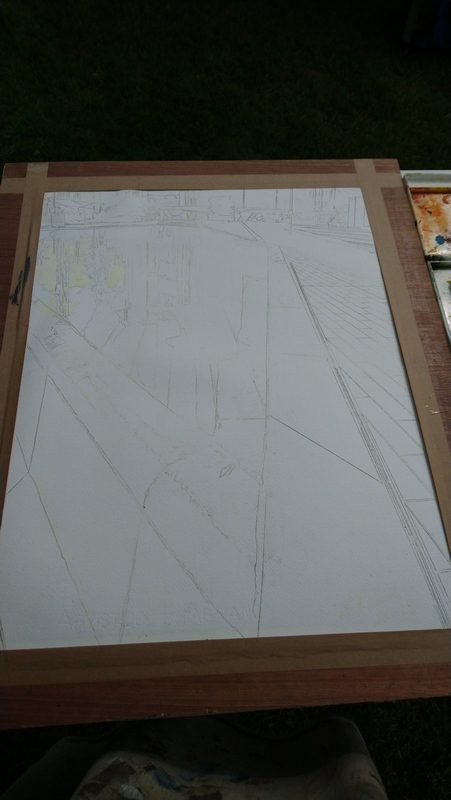
All of my creations begin with white paper, and Battersea Reflections painting is no different. We join the process after the image is on the paper and the masking is well underway. You can just make out the masking as the dirty yellow marks.
Art Demonstrations at Claydon House
Mostly I work in the studio, but from time to time I will demonstrate at exhibitions and events. The creation of Battersea Reflections painting coincided with Bucks Art Weeks and I was demonstrating at Claydon Courtyard outside the Gallery. So naturally Battersea went with me. This picture was taken shortly after set up when I was about to start painting. See below
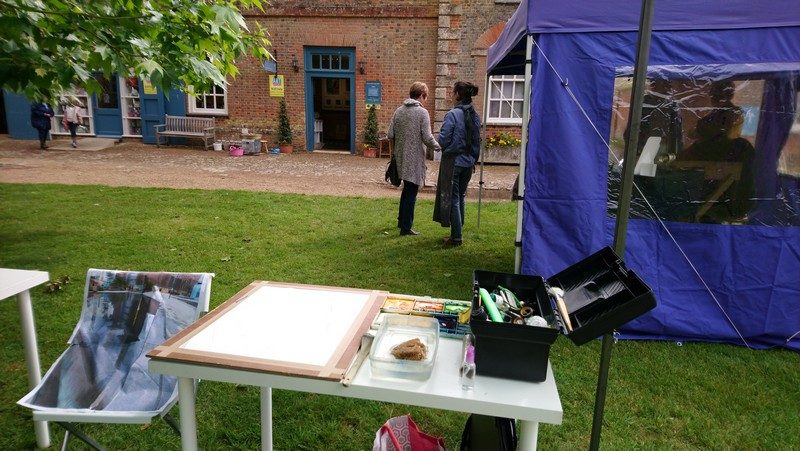
Creating Texture
Beginning the painting with a watercolour wash, the cling film helps me create background texture and covers the white page as quickly as possible.
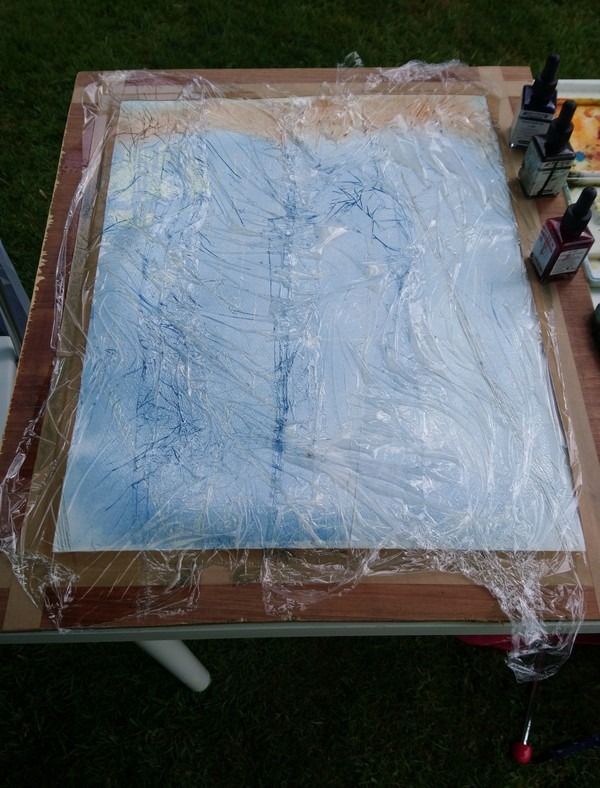
Watercolour Rules
Watercolour Artists work from light to dark, and so do I, here you can see a close up of the inks spreading. A process which can be very fast of slow depending on water and salt balance.
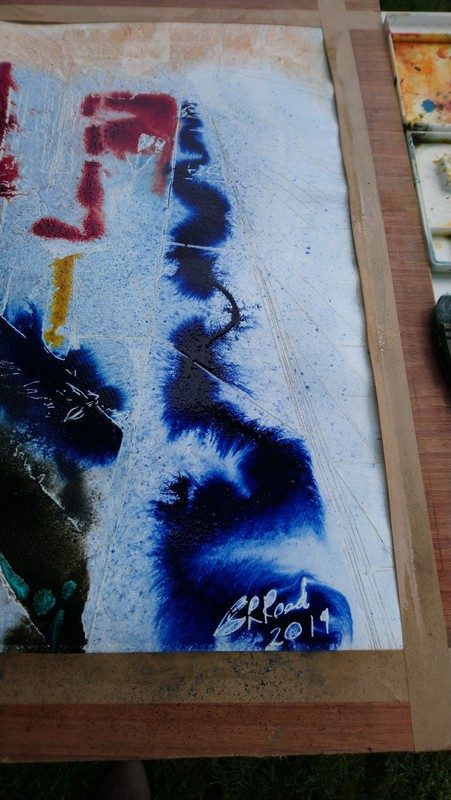
Emphasising Details of the Image
One aspect I was keen to emphasise, was the underwater lighting and the colours it caught as the water cascades over the pool edge. You can see the form emerging in the full image below.
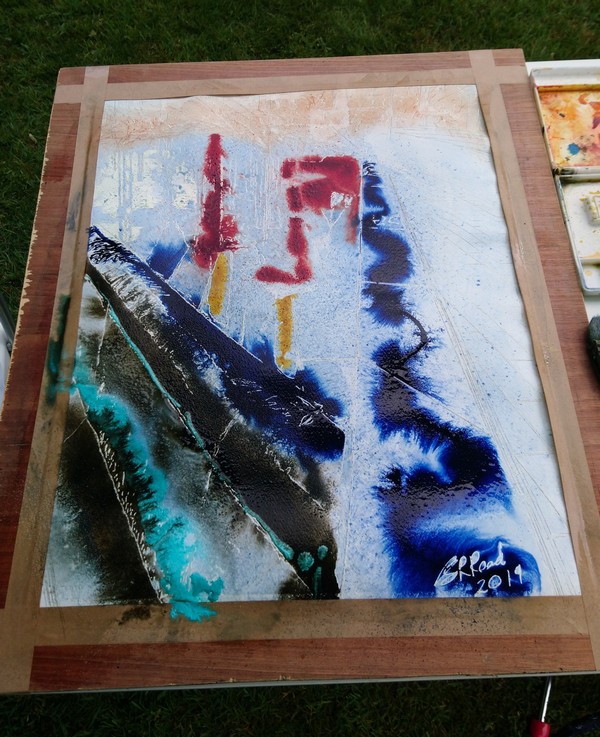
Yet More Layers
At this point it would appear I got carried away and didn’t take many more photos. Might have been due to visitors or I was just enjoying the process. Ignore the top right photo in this image, that’s for another piece which I’ll be sharing in another post.
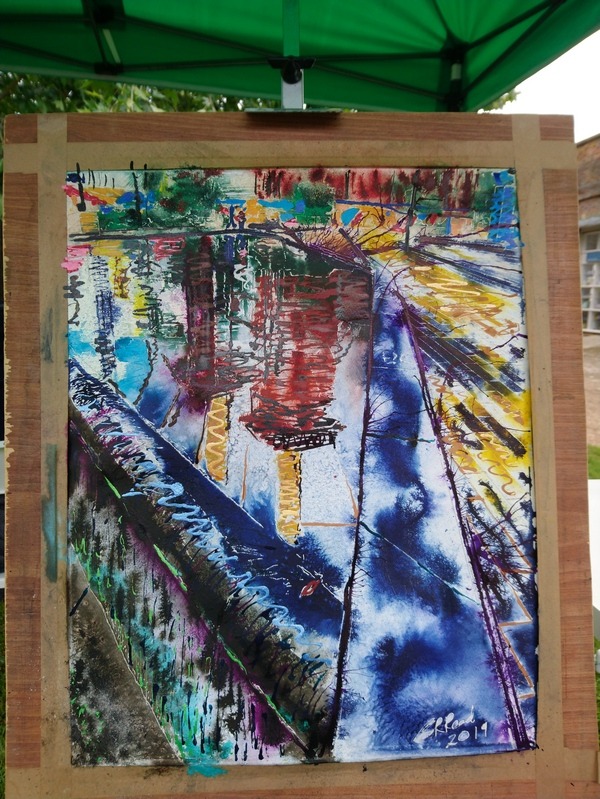
Painting Complete

Cleaning up the Masking
Onto the final, and quite possibly the best bit. Removing the masking fluid. Peeling it off to reveal the white paper underneath is the point when the whole image seems to come into focus. You might have spotted I was back at Claydon.
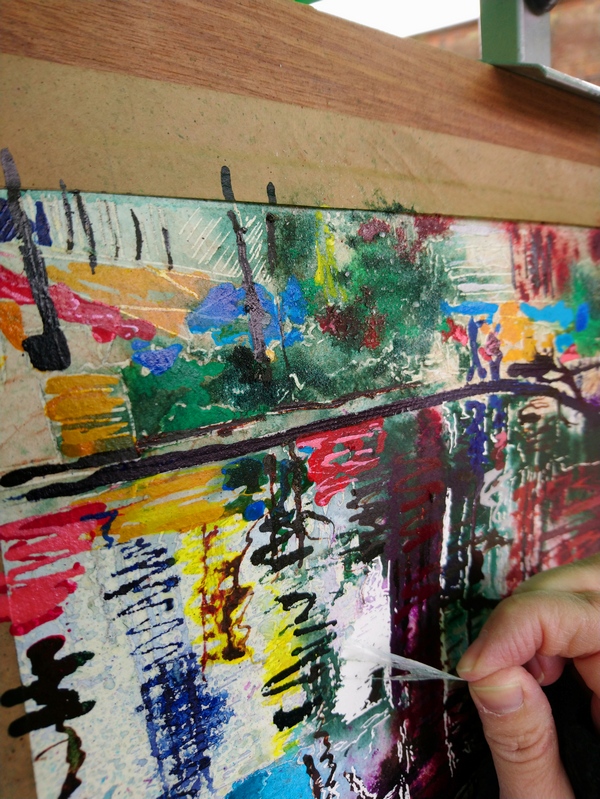
*Drumroll* The finished Battersea Reflections painting

